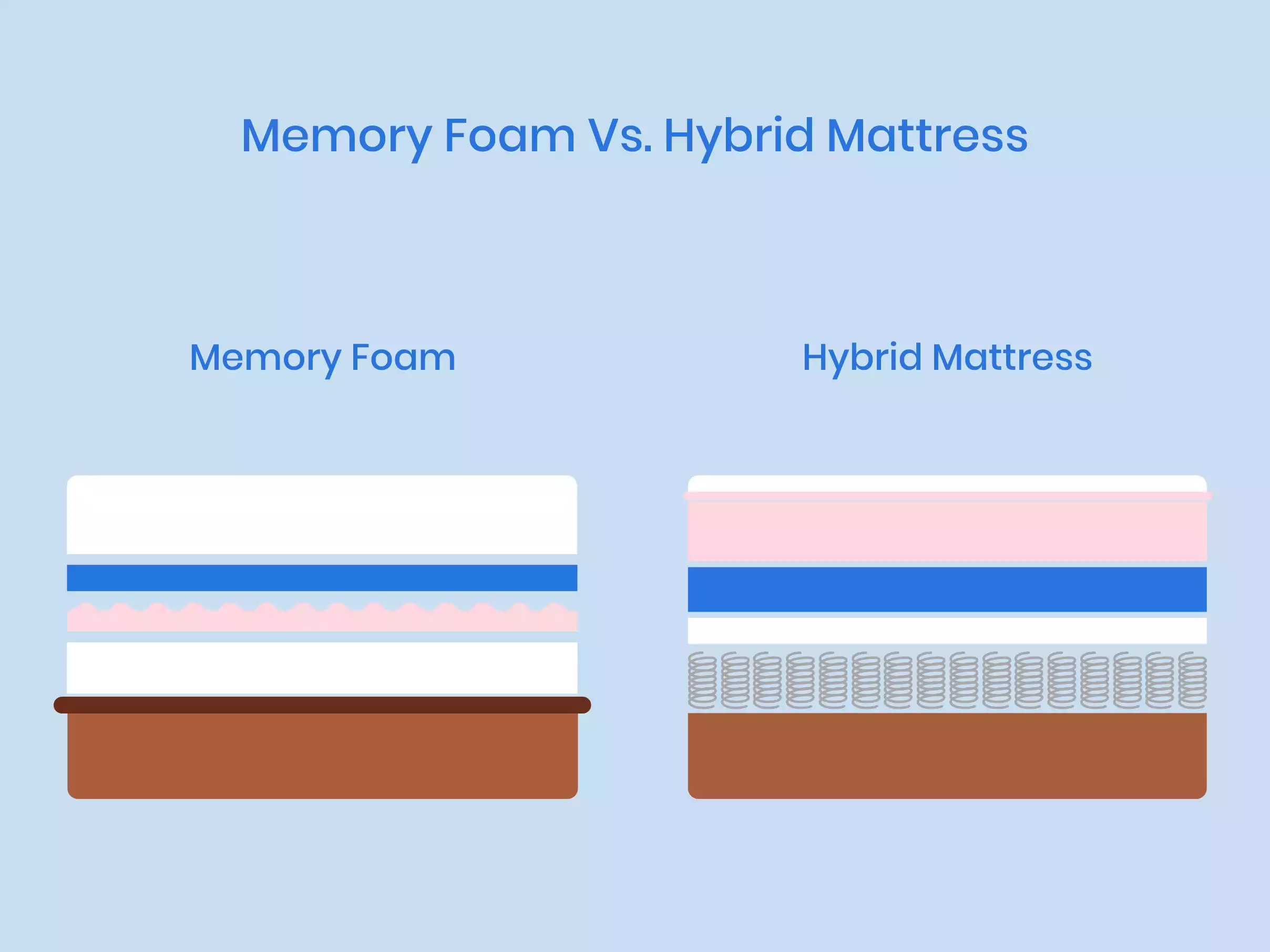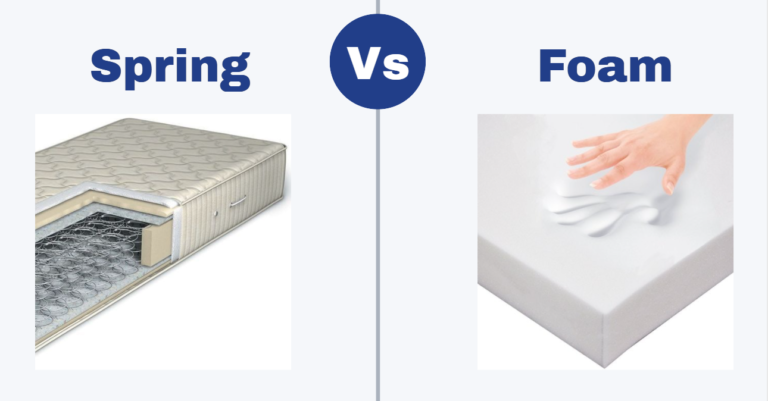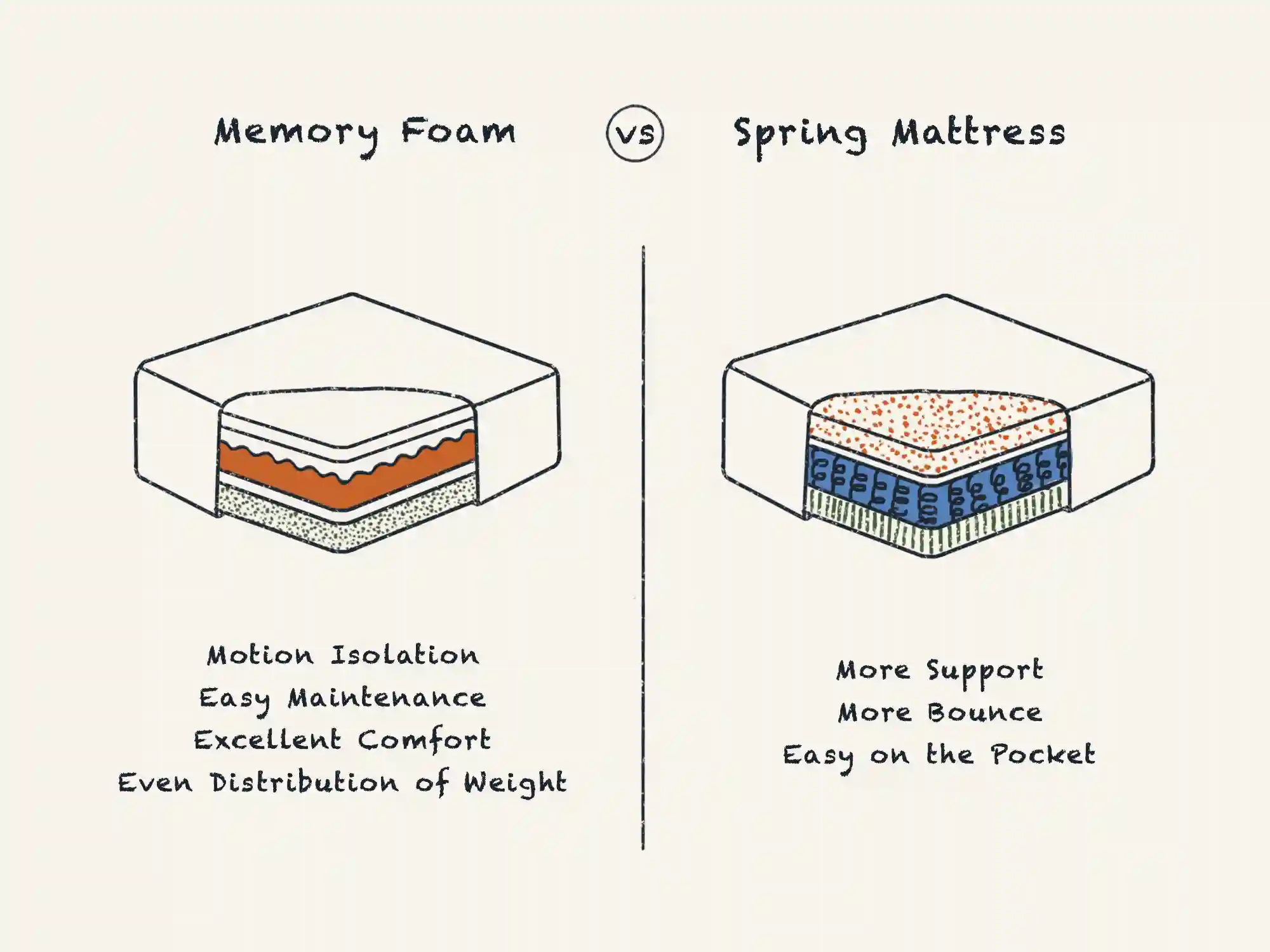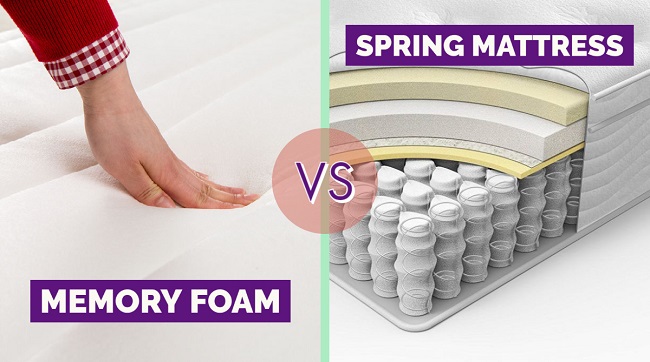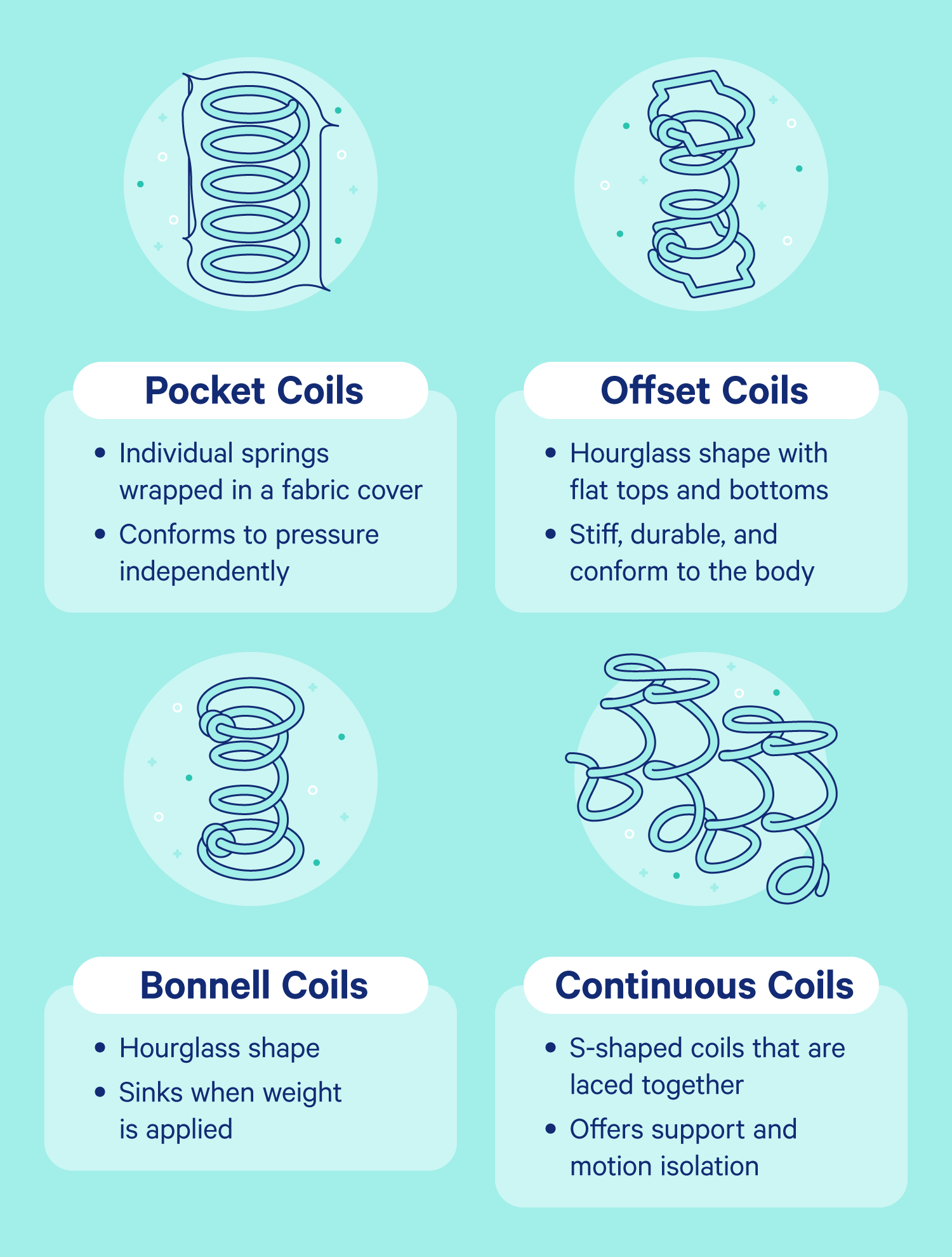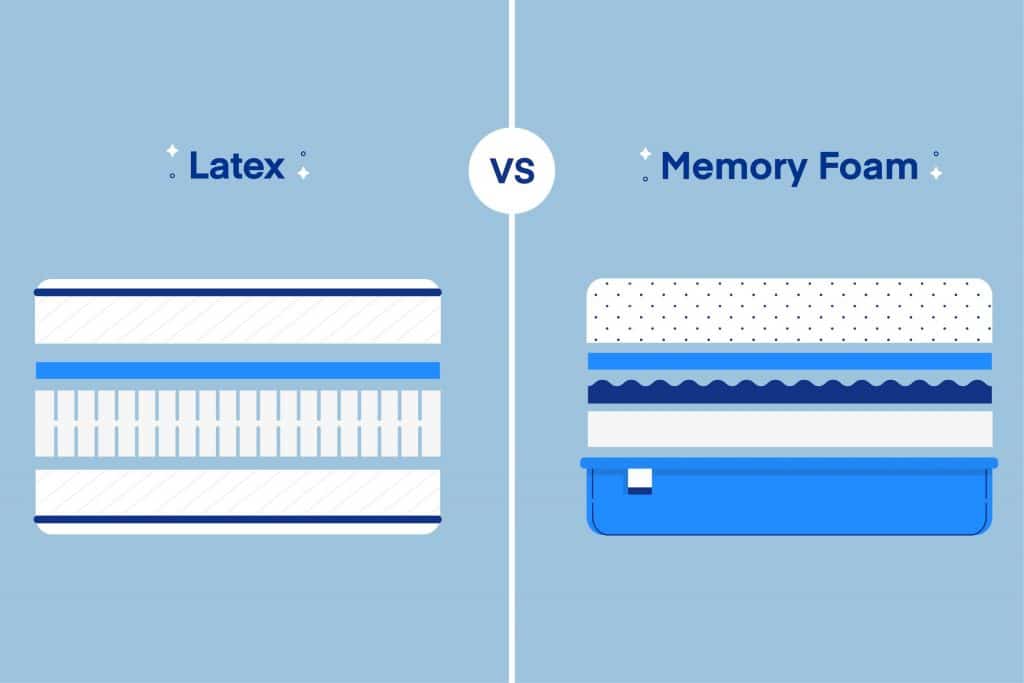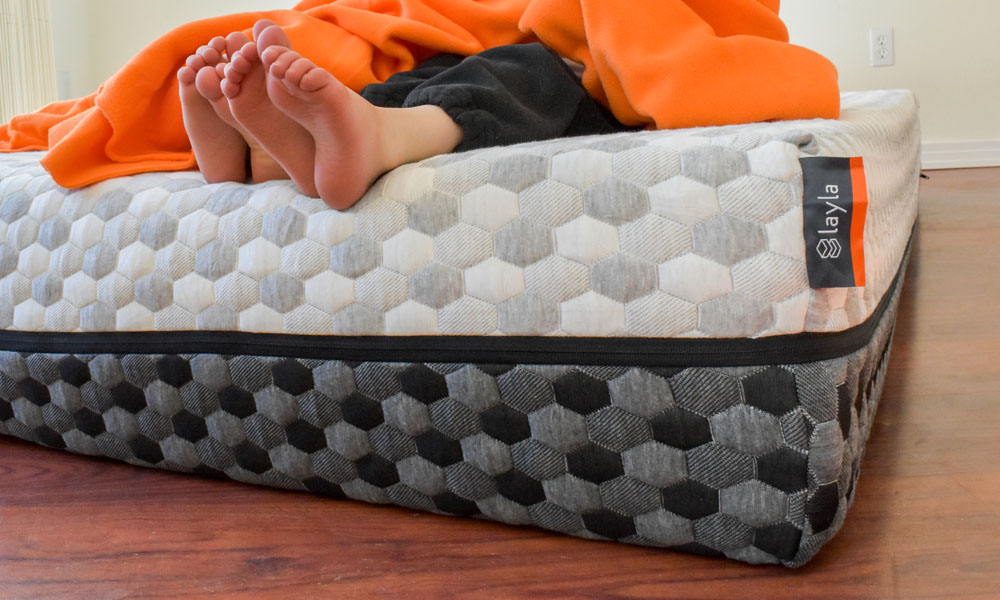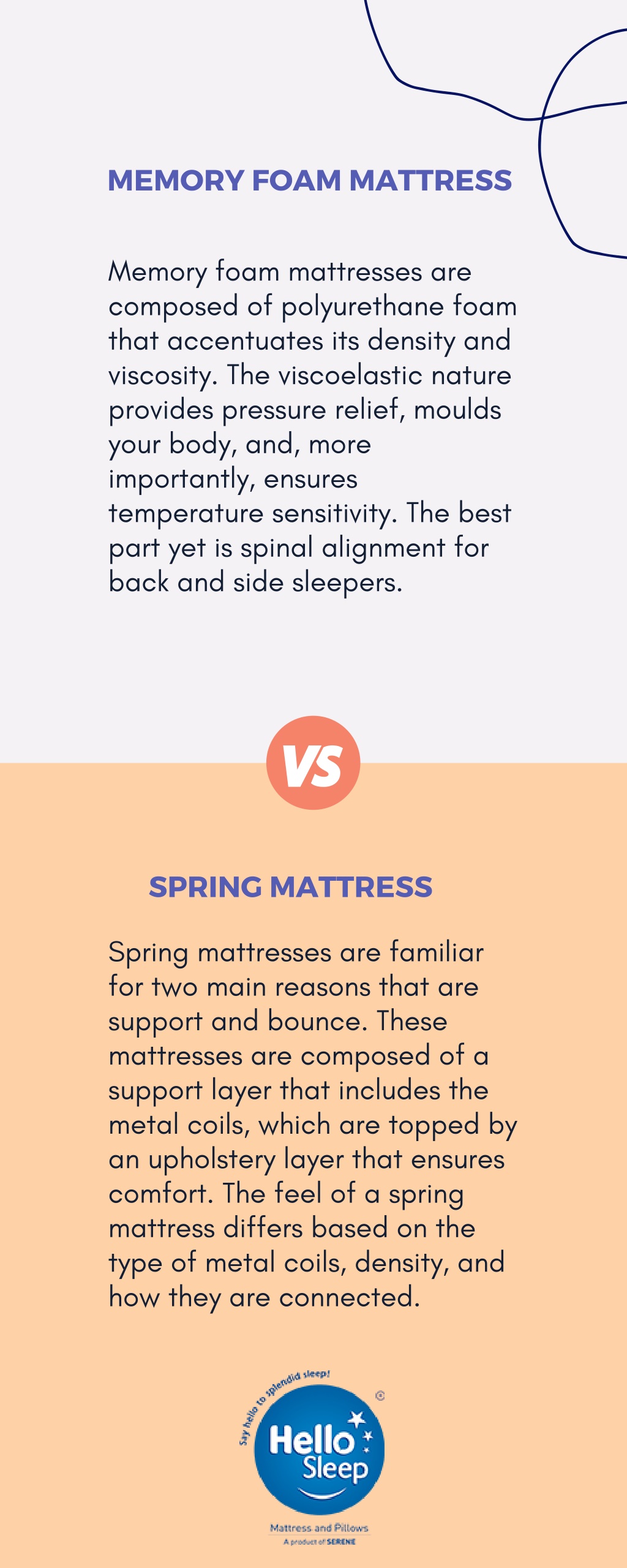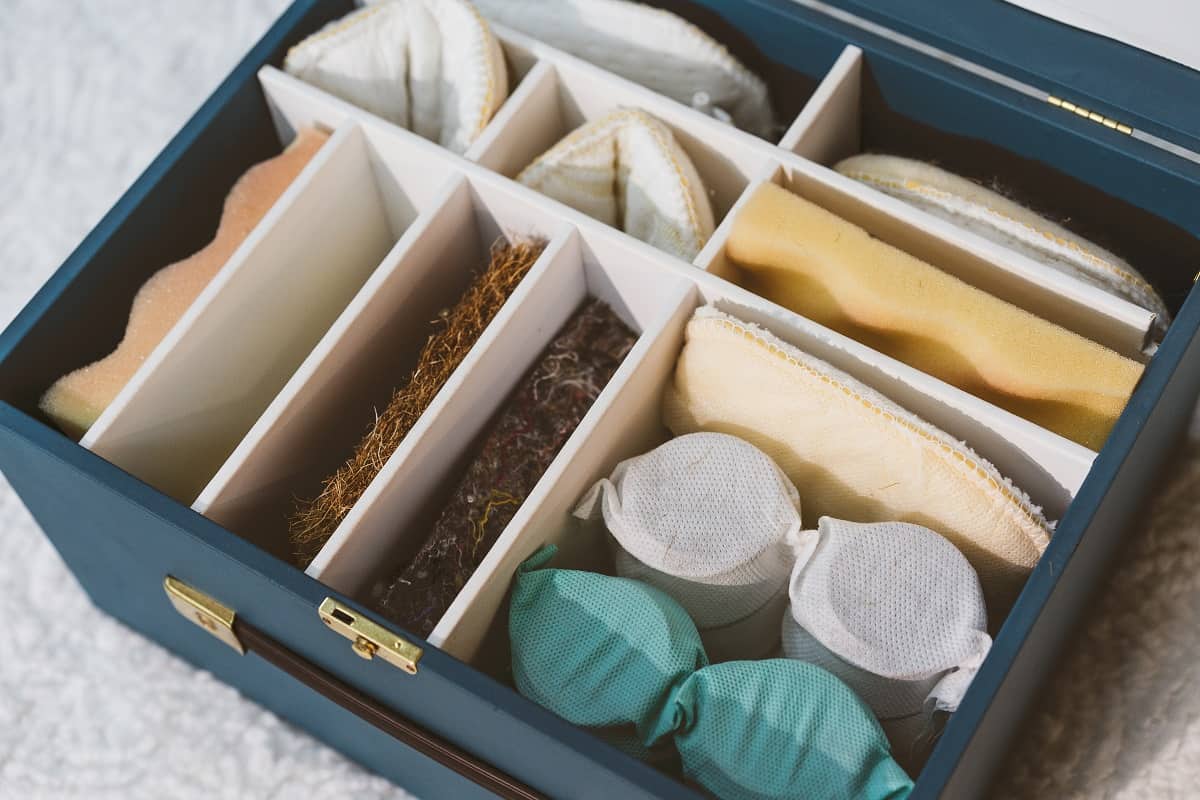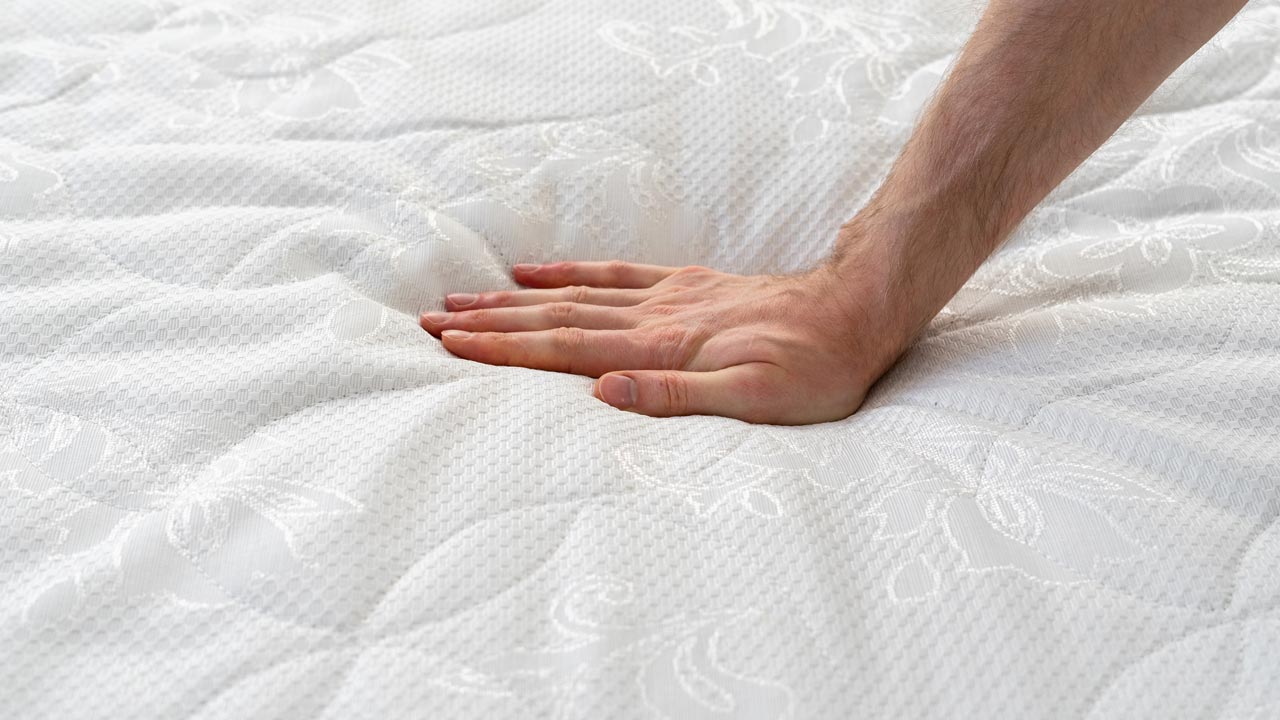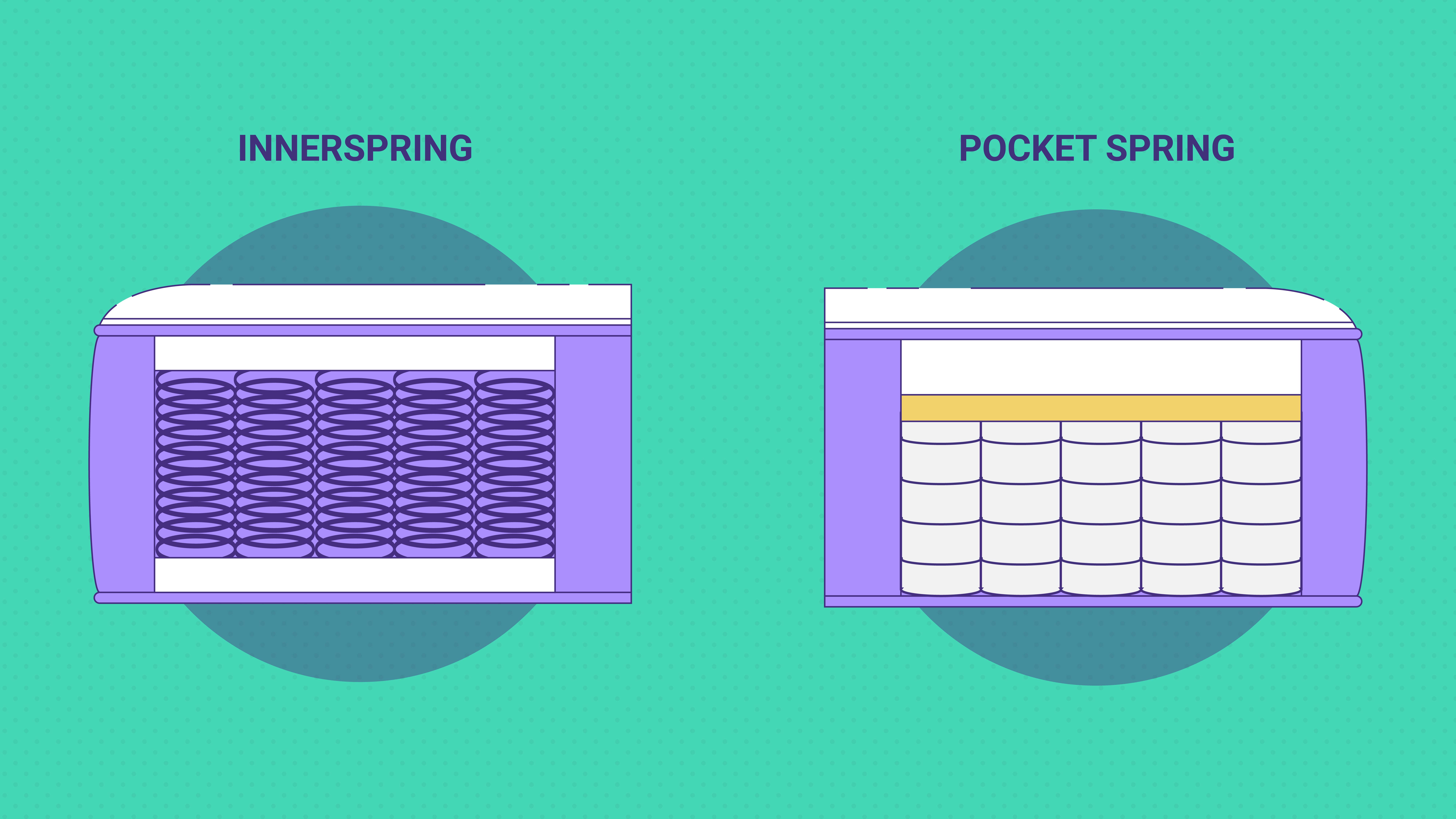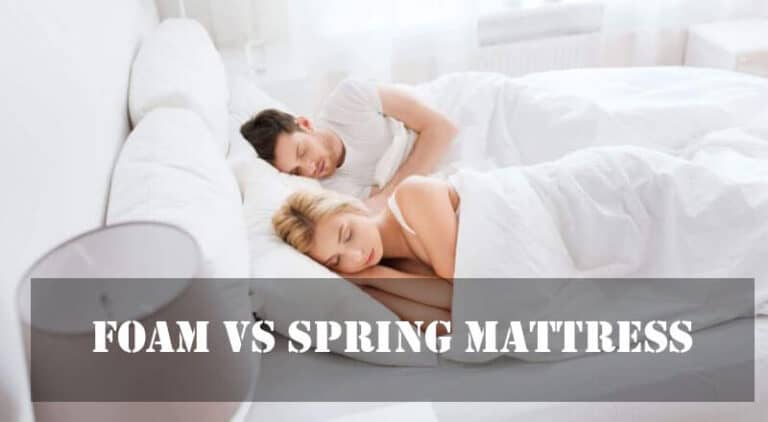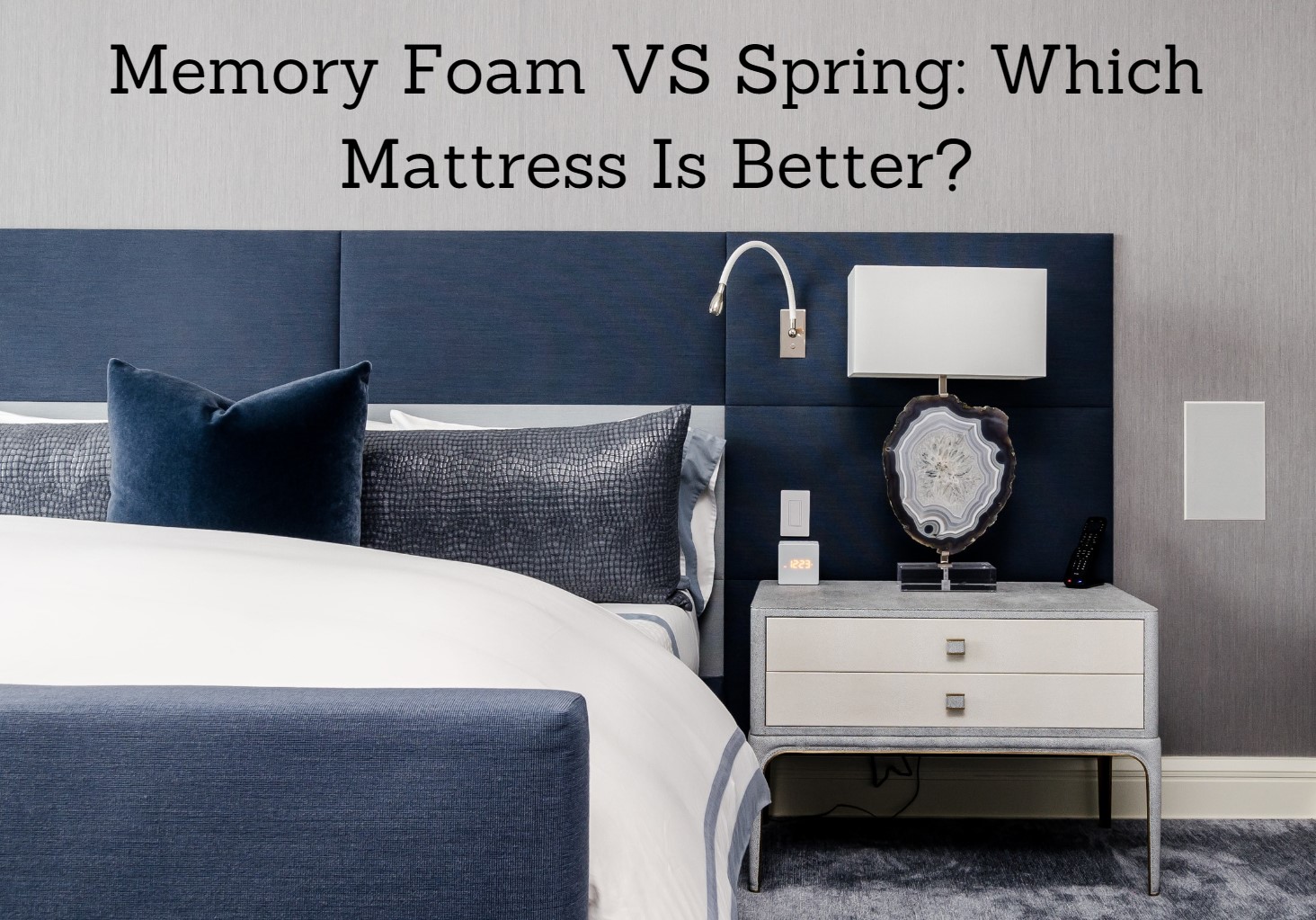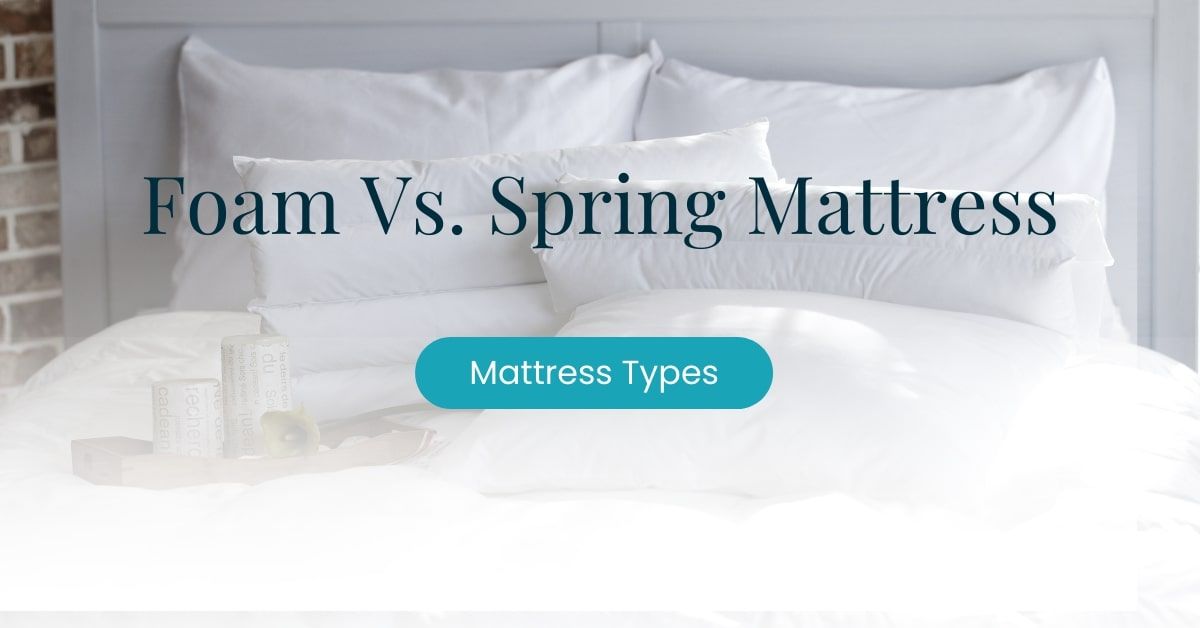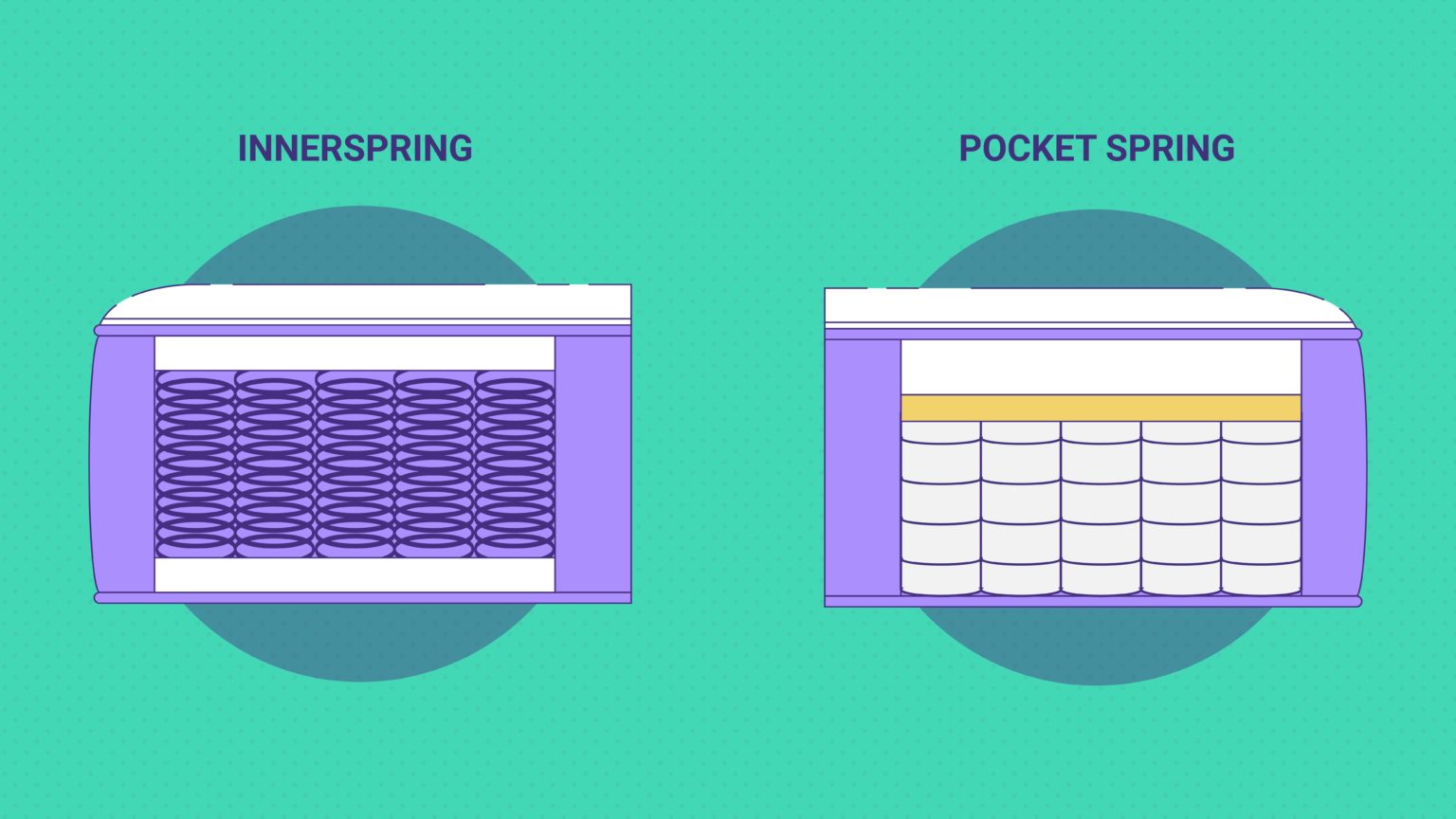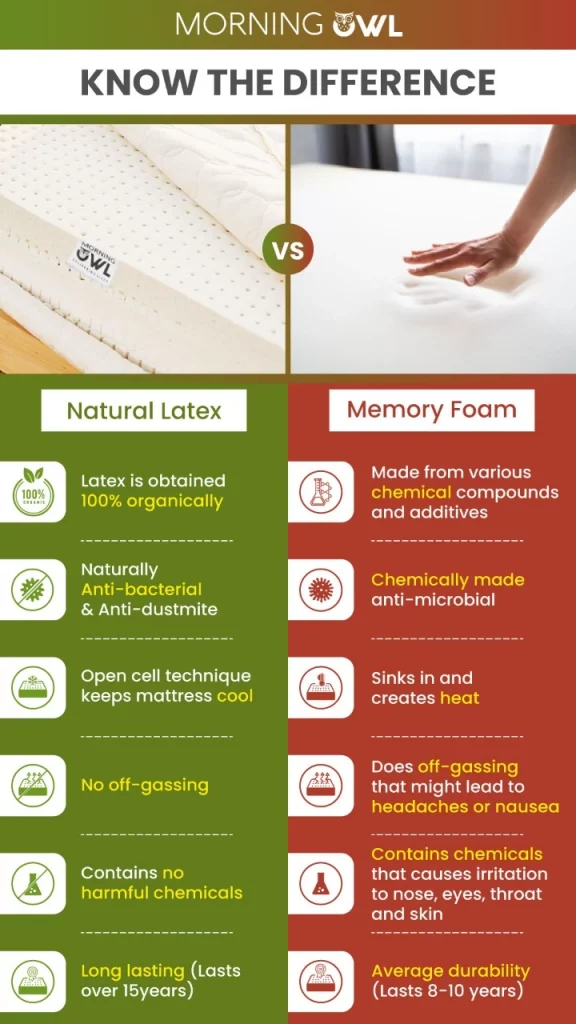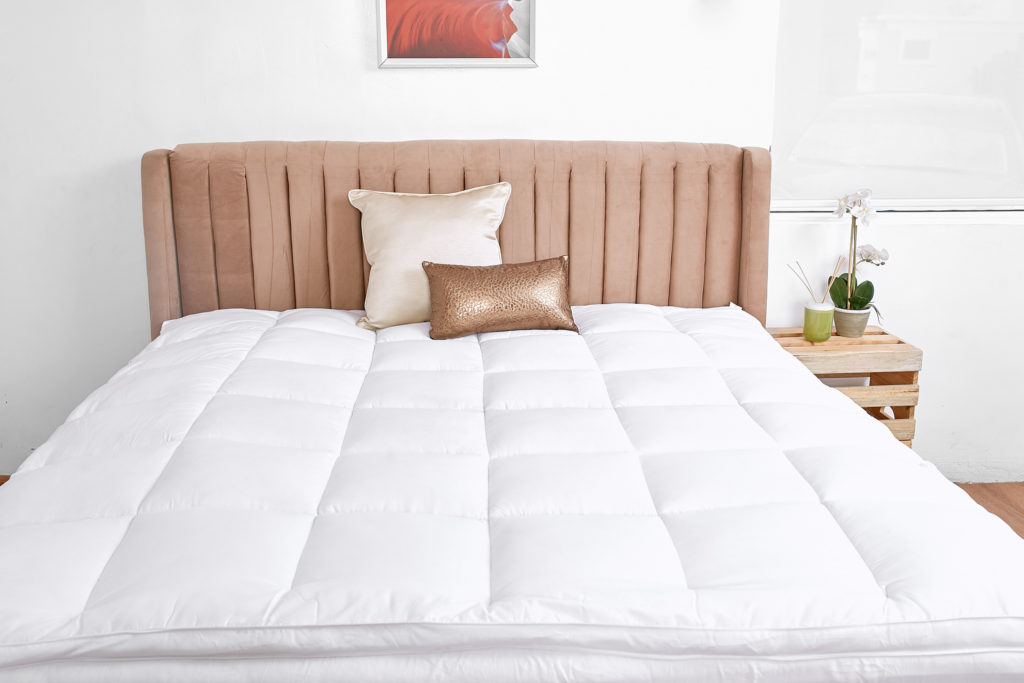When it comes to choosing a new mattress, one of the biggest decisions you'll have to make is whether to go with a foam mattress or a spring mattress. Both types of mattresses have their own unique benefits and drawbacks, and it can be difficult to determine which one is better for your needs. In this article, we'll take a closer look at the differences between foam and spring mattresses, and help you decide which one is the right choice for you.Foam Mattress vs Springs: Which One is Better?
Before we dive into the specifics of foam and spring mattresses, let's take a quick look at the pros and cons of each. Foam Mattress Pros: Foam mattresses are known for their pressure-relieving properties, as well as their ability to conform to the shape of your body. They are also excellent at isolating motion, making them a great choice for couples who don't want to be disturbed by their partner's movements during the night. Foam Mattress Cons: One of the main drawbacks of foam mattresses is that they can retain heat, making them less ideal for those who tend to sleep hot. They may also have a chemical smell when first unpacked, though this typically dissipates within a few days. Spring Mattress Pros: Spring mattresses are known for their excellent support and durability. The coils in the mattress provide a firm and responsive surface, making them a good choice for those who prefer a firmer feel. They also tend to have better breathability than foam mattresses. Spring Mattress Cons: Spring mattresses can be noisy, especially when they start to age and the coils begin to creak. They also tend to have less motion isolation, which may be a concern for light sleepers.Foam vs Spring Mattress: Pros and Cons
Now that we've gone over the pros and cons of each type of mattress, you may still be wondering which one is right for you. The answer ultimately depends on your personal preferences and needs. If you prioritize pressure relief and motion isolation, a foam mattress may be the better choice for you. On the other hand, if you prioritize support and durability, a spring mattress may be the way to go. It's also important to consider your sleeping position. Foam mattresses tend to be better for side sleepers, as they provide better cushioning for pressure points. Spring mattresses may be better for back and stomach sleepers, as they offer more support for the spine.Foam vs Spring Mattress: Which One Should You Choose?
While foam and spring mattresses may seem vastly different at first glance, they actually have some similarities. Both types of mattresses come in a variety of firmness levels, so you can find the perfect one for your preferences. They also both come in different sizes, so you can easily find the right fit for your bed frame. However, the main difference between the two is the materials they are made from. Foam mattresses are typically made from layers of memory foam, latex, or polyurethane foam, while spring mattresses are made of coils and a layer of cushioning on top.Foam Mattress vs Spring Mattress: Differences and Similarities
Comfort and support are two important factors to consider when choosing a mattress. Foam and spring mattresses differ in how they provide these elements. Foam mattresses offer a more plush and contouring feel, hugging your body and relieving pressure points. They also do a good job of isolating motion, so you won't feel your partner moving around during the night. Spring mattresses, on the other hand, provide a more responsive and supportive feel. The coils in the mattress offer a firm surface that can help alleviate back pain and promote proper spinal alignment.Foam vs Spring Mattress: Comfort and Support Comparison
When it comes to longevity, spring mattresses tend to have the edge. The coils in the mattress provide a sturdy and durable structure that can withstand years of use. However, foam mattresses have come a long way in terms of durability and can also last for many years with proper care. It's important to note that the lifespan of any mattress depends on factors such as usage, weight, and care. Both foam and spring mattresses can last anywhere from 7-10 years with proper maintenance.Foam Mattress vs Spring Mattress: Durability and Longevity
Another important factor to consider when choosing a mattress is the price. Foam mattresses tend to be more expensive than spring mattresses, but they also offer better value in terms of comfort and support. While you may pay more upfront for a foam mattress, the long-term benefits and quality of sleep may make it a worthwhile investment.Foam vs Spring Mattress: Price and Value Comparison
If you sleep with a partner or have a pet that likes to cuddle up in bed, you may be concerned about motion isolation and noise. Foam mattresses excel in both of these areas, as the foam absorbs movement and eliminates any noise from the mattress. Spring mattresses, on the other hand, may have more motion transfer and can be noisier due to the coils. This may be a concern for light sleepers who are easily disturbed by movement and sound.Foam Mattress vs Spring Mattress: Motion Isolation and Noise
As mentioned earlier, foam mattresses have a reputation for retaining heat, which can be uncomfortable for those who sleep hot. However, many foam mattresses now come with cooling technologies, such as gel-infused foam or open-cell foam, to help combat this issue. Spring mattresses, on the other hand, tend to have better breathability due to the coils allowing for airflow within the mattress. This can be beneficial for those who tend to sleep hot.Foam vs Spring Mattress: Heat Retention and Breathability
Lastly, it's important to consider your preferred sleeping position when choosing between a foam or spring mattress. If you sleep on your side, a foam mattress may be the better choice as it provides better pressure relief for your hips and shoulders. Back and stomach sleepers may find more comfort and support on a spring mattress, as it can help keep their spine properly aligned.Foam Mattress vs Spring Mattress: Which One is Better for Your Sleeping Position?
The Comfort Factor
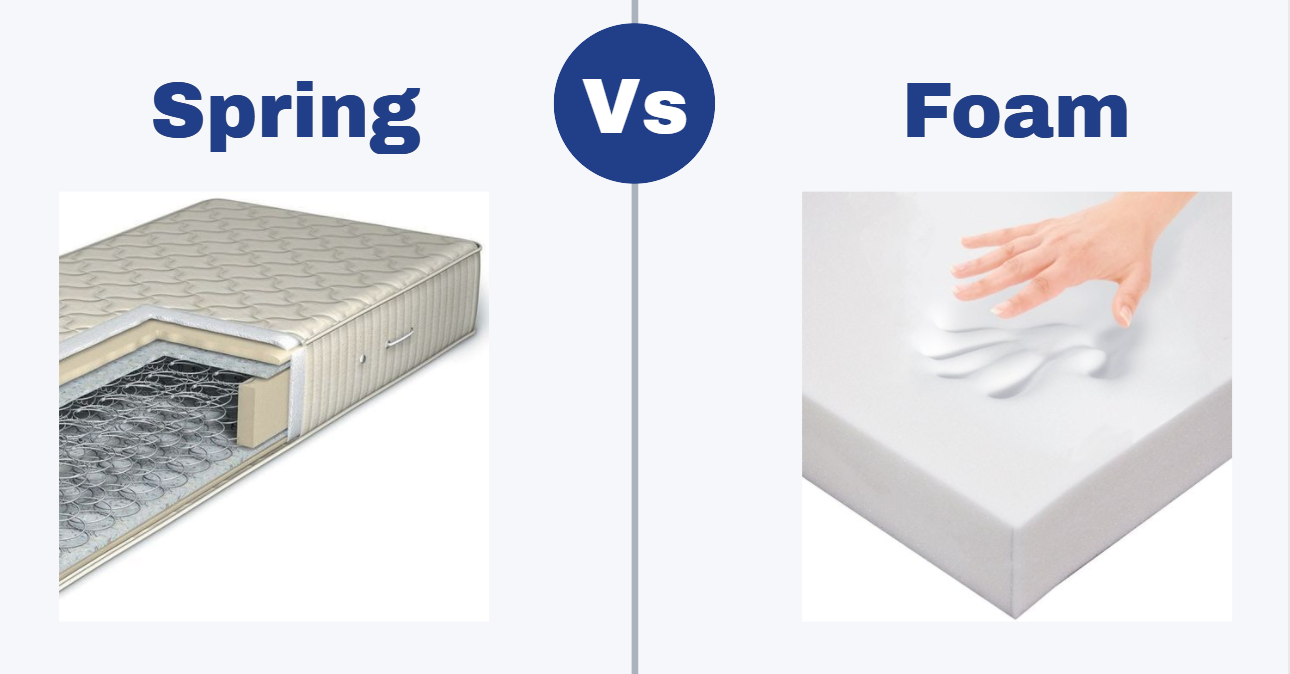
Why Foam Mattresses Reign Supreme in Comfort
 When it comes to getting a good night's sleep, comfort is key. And when choosing between a foam mattress and a spring mattress, comfort is the main differentiator. While spring mattresses may offer initial support, they can often lead to pressure points and aches due to the uneven distribution of weight. Foam mattresses, on the other hand, provide a more even and consistent level of support, contouring to the body's natural curves and alleviating pressure points. This makes them a popular choice for those who suffer from back pain or other body aches. Additionally, foam mattresses have a higher level of motion isolation, meaning that movement from one side of the bed won't disturb the other person's sleep. So if you value a comfortable and uninterrupted night's rest, a foam mattress may be the best choice for you.
Foam mattresses
also come in a variety of firmness levels, allowing you to customize your comfort based on your personal preferences and sleeping habits. Whether you prefer a soft, plush feel or a firmer, more supportive mattress, there is a foam option that will suit your needs. On the other hand, spring mattresses typically come in one level of firmness and can't be adjusted to fit your specific comfort needs. This lack of customization can lead to discomfort and restless nights for some sleepers.
In addition to providing superior comfort,
foam mattresses
also have a longer lifespan compared to spring mattresses. The high-quality materials used in foam mattresses make them durable and resistant to sagging and wear over time. This means you won't have to replace your mattress as frequently, ultimately saving you money in the long run.
But it's not just about the comfort factor when it comes to foam mattresses. They also have other benefits that make them a top choice for house design. Foam mattresses are hypoallergenic and resistant to dust mites, making them a healthier option for those with allergies or respiratory issues. They are also more eco-friendly, as they are made from natural and sustainable materials.
In conclusion, while spring mattresses may have been the traditional choice in the past, foam mattresses have quickly risen to the top as the superior option in terms of comfort and other benefits. With their customizable firmness levels, longer lifespan, and health and environmental advantages, foam mattresses are the clear winner in the foam mattress vs springs debate. So why settle for a less comfortable and less durable option? Upgrade to a foam mattress for the ultimate sleep experience.
When it comes to getting a good night's sleep, comfort is key. And when choosing between a foam mattress and a spring mattress, comfort is the main differentiator. While spring mattresses may offer initial support, they can often lead to pressure points and aches due to the uneven distribution of weight. Foam mattresses, on the other hand, provide a more even and consistent level of support, contouring to the body's natural curves and alleviating pressure points. This makes them a popular choice for those who suffer from back pain or other body aches. Additionally, foam mattresses have a higher level of motion isolation, meaning that movement from one side of the bed won't disturb the other person's sleep. So if you value a comfortable and uninterrupted night's rest, a foam mattress may be the best choice for you.
Foam mattresses
also come in a variety of firmness levels, allowing you to customize your comfort based on your personal preferences and sleeping habits. Whether you prefer a soft, plush feel or a firmer, more supportive mattress, there is a foam option that will suit your needs. On the other hand, spring mattresses typically come in one level of firmness and can't be adjusted to fit your specific comfort needs. This lack of customization can lead to discomfort and restless nights for some sleepers.
In addition to providing superior comfort,
foam mattresses
also have a longer lifespan compared to spring mattresses. The high-quality materials used in foam mattresses make them durable and resistant to sagging and wear over time. This means you won't have to replace your mattress as frequently, ultimately saving you money in the long run.
But it's not just about the comfort factor when it comes to foam mattresses. They also have other benefits that make them a top choice for house design. Foam mattresses are hypoallergenic and resistant to dust mites, making them a healthier option for those with allergies or respiratory issues. They are also more eco-friendly, as they are made from natural and sustainable materials.
In conclusion, while spring mattresses may have been the traditional choice in the past, foam mattresses have quickly risen to the top as the superior option in terms of comfort and other benefits. With their customizable firmness levels, longer lifespan, and health and environmental advantages, foam mattresses are the clear winner in the foam mattress vs springs debate. So why settle for a less comfortable and less durable option? Upgrade to a foam mattress for the ultimate sleep experience.



